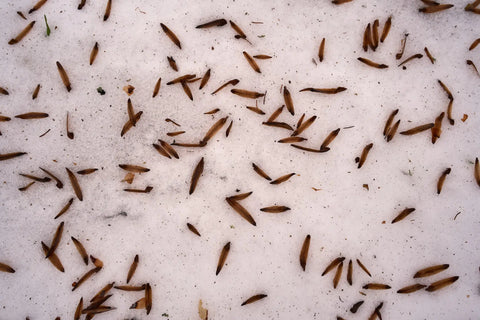With the arrival of spring and the anticipation of summer, now is the time to be aware and on the lookout for swarming termites. Swarming termites are a common sight in Australia during this season, but what exactly do they signify? Perhaps they are simply flying around in search of mates or do they point to a potential infestation? This article will provide readers with a comprehensive overview of swarming termites in Australia, exploring their behaviors and habits as well as what these activities mean for homeowners. By arming yourself with knowledge about swarming termites, you can take the necessary steps to keep your home safe from these potentially damaging pests.
What is a termite swarm?
A termite swarm is a natural phenomenon that occurs when many thousands of reproductive termites, both male and female, leave their parent colonies to form their own young, independent colonies. This usually happens during the springtime or after rainfall. During the swarm, the termites fly up into the sky sometimes for miles, and are often mistaken for flying ants. After mating in the air and forming new colonies, these winged females, known as alates, become new queen termites. Since this is a natural occurrence every year, it’s important to pay special attention to your home since a termite swarm can bring infestation to an area quickly and without warning.
Reasons for flying termites swarm in Australia
The annual termite swarms that appear in the skies of Australia are an awe-inspiring natural phenomenon. These swarms occur because the season is just right for them to mate, multiply, and eventually disperse. Without this period of growth, the insect population can't sustain itself. Mild temperatures and humidity levels also play a factor in making Australia one of the prime destinations for termite swarms.
The swarming season for termites
The swarming season for termites is quite a mysterious process, though we do know certain things about it. They will most commonly swarm in the spring and early summer months, but they can also emerge at other times of the year when they sense that the humidity levels are ideally suited to them. The peak months for swarming throughout the Sunshine Coast are often said to be November and December but please be aware that this is not a strict timeline - there could be other occurrences too if conditions are right.
What do swarming termites look like?
Swarming termites often get mistaken for ants due to their similarity in appearance, however, it is important to know the differences. Termites usually have a brown or tan color and a thick body that does not narrow between the thorax and abdomen. They also possess two sets of wings that are equal in length, while flying ants will often have elbowed antennae, two unequal-sized sets of wings - with the front pair being larger - and a distinguishable constriction between the thorax and abdomen. Understanding these key differences will help assure whether you are dealing with termites or ants.

Do swarming termites mean infestation & How to reduce the risk of getting termites?
Termites can mean trouble if found swarming around your home. Swarming is a sign of infestation and the presence of termites in large numbers indicates the area already has an established colony that's feeding on the property.
Taking preventative measures to reduce the risk of getting termites is essential for any homeowner.
- Inspect your home regularly for signs of termites, such as mud tubes on the exterior of your home or wood that sounds hollow when tapped.
- Make sure that there is no wood-to-soil contact around your home, as this can provide a pathway for termites to enter your home.
- Reduce moisture levels around your home by fixing any leaks and ensuring that gutters are clear and functioning properly.
- Remove any dead trees or stumps from your property, as these can attract termites.
- Use termite-resistant materials when building or repairing your home, such as concrete, brick, or treated wood.
- Regularly treat the perimeter of your home with a pesticide to help deter termites from entering your property.
Conclusion
Swarming termites are a common occurrence in Australia during the hotter months. They are attracted to light sources and often enter homes through small gaps or cracks in the foundation. While they do not cause Infestation, it is important to take precautionary measures to reduce the risk of getting termites by ensuring your home is well-sealed.
FAQ:
Not all swarming termites have wings. In fact, only reproductive swarming termites, also known as alates, will have wings. Alates are the ones that become new kings and queens of a future colony after they emerge from their host colony and begin their own by mating with another newly emerged alate.
The purpose of swarming is to reproduce and form new colonies. Swarming increases the chance of reproductive success by enabling mating between individuals from different colonies so that there isn’t an overly large amount of relatedness within a colony.
Termites engage in swarming behavior when they are leaving their old colonies and seeking new ones. During such swarms, termites with wings will fly off and later shed the wings, usually within 24-48 hours of taking flight. The individuals that lose their wings will hunt for food until they either find a suitable spot to build a colony or die trying.
Swarming termites may seem like a frightening occurrence, but they are actually harmless. Termites won't cause any damage to your property when they swarm; these events indicate that they're simply looking for a mate and trying to spread their species.











